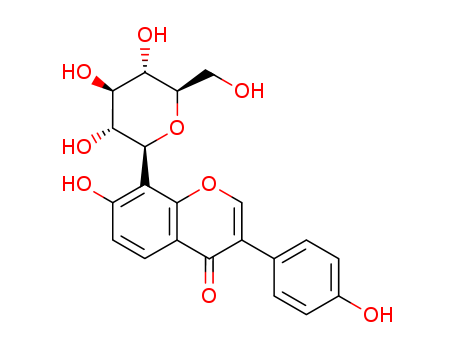- Chemical Name:Puerarin
- CAS No.:3681-99-0
- Molecular Formula:C21H20O9
- Molecular Weight:416.384
- Hs Code.:29389090
- European Community (EC) Number:609-296-1
- Wikipedia:Puerarin
- Wikidata:Q104250649
- Mol file:3681-99-0.mol
Synonyms:7-hydroxy-3-(4-hydroxyphenyl)-8-[(2S,3S,4R,5R,6R)-3,4,5-trihydroxy-6-(hydroxymethyl)oxan-2-yl]chromen-4-one;Hexitol, 1,5-anhydro-1-C-[7-hydroxy-3-(4-hydroxyphenyl)-4-oxo-4H-1-benzopyran-8-yl]-;Pneranin;NPI 031G;4H-1-Benzopyran-4-one, 8-beta-D-glucopyranosyl-7-hydroxy-3-(4-hydroxyphenyl)- (9CI);8-beta-D-Glucopyranosyl-7-hydroxy-3-(4-hydroxyphenyl)-4H-1-benzopyran-4-one;Sanguinarine citrate;Puerarin 99% (UV);Puerariae P.E.;Pueraria lobata;Pueraria P.E;



 F,
F, C
C

